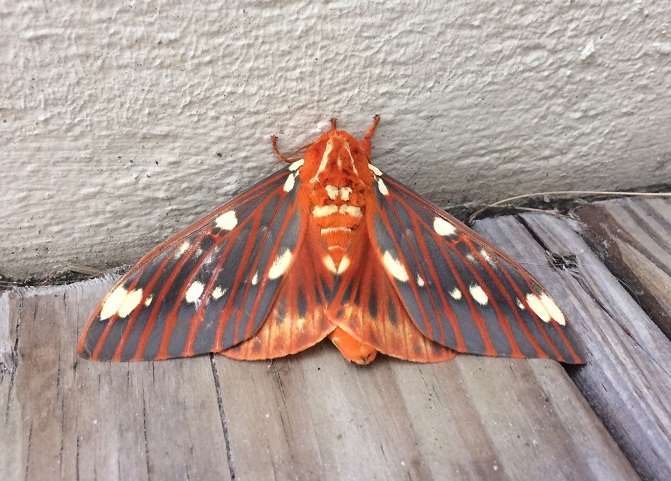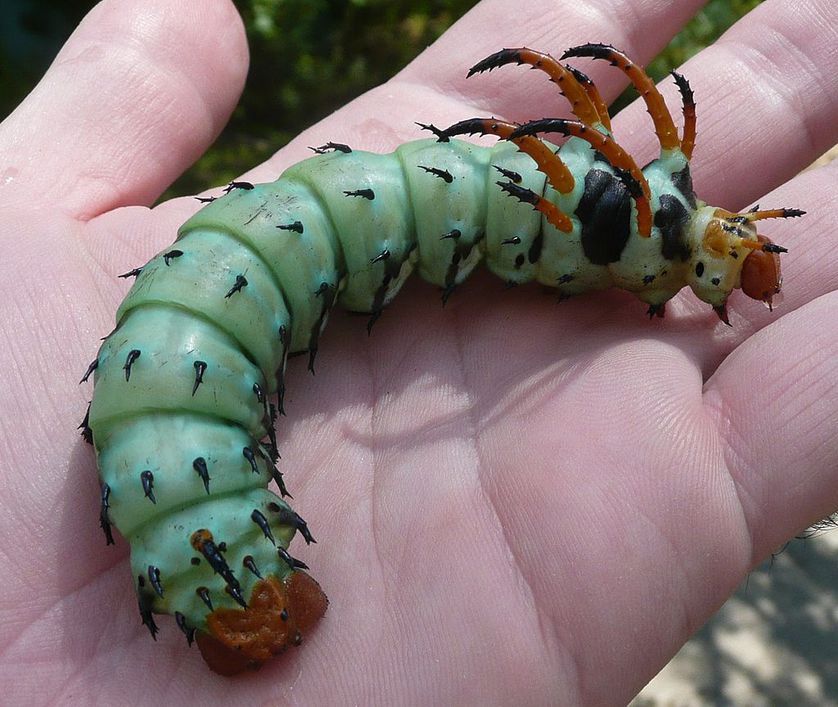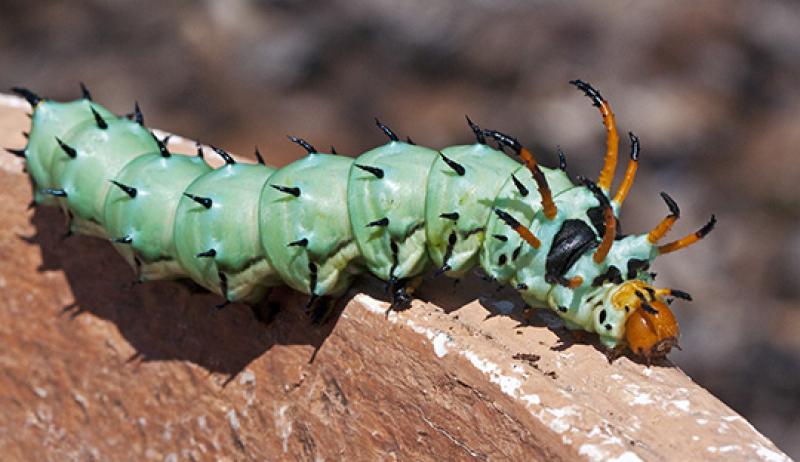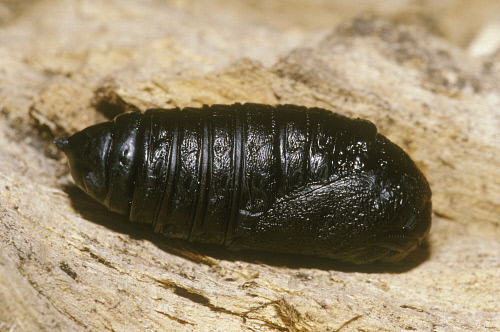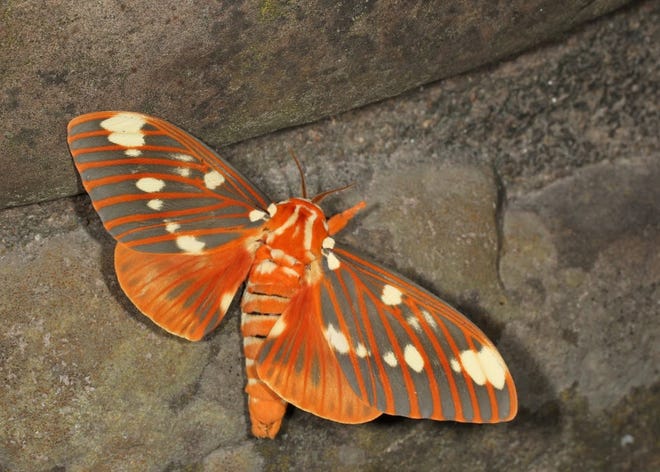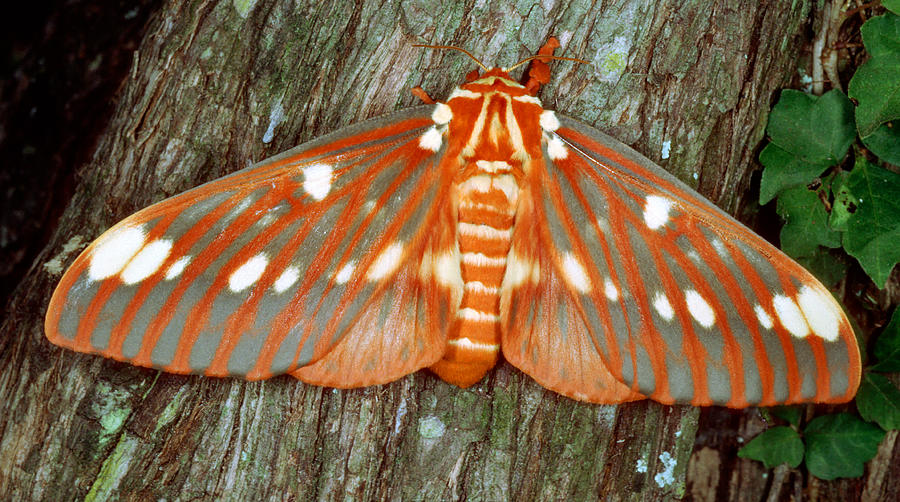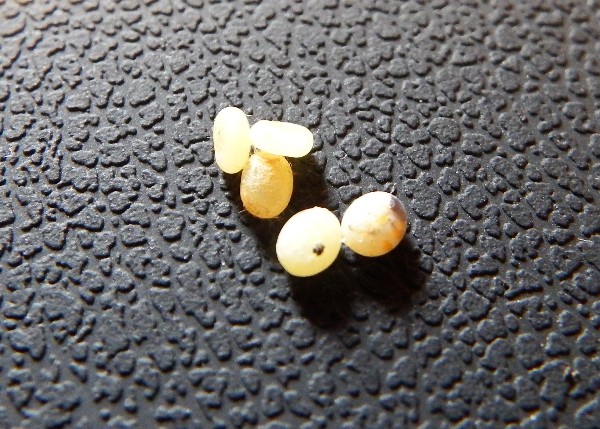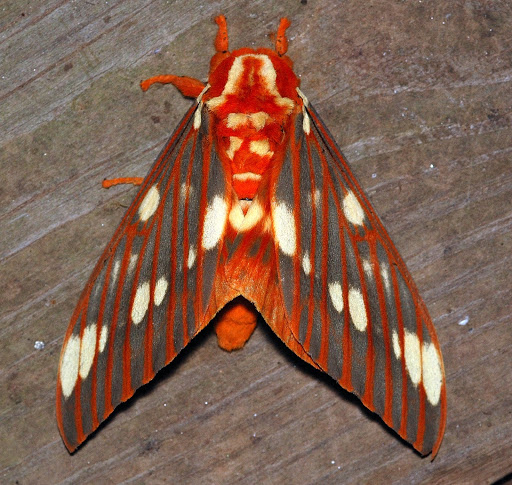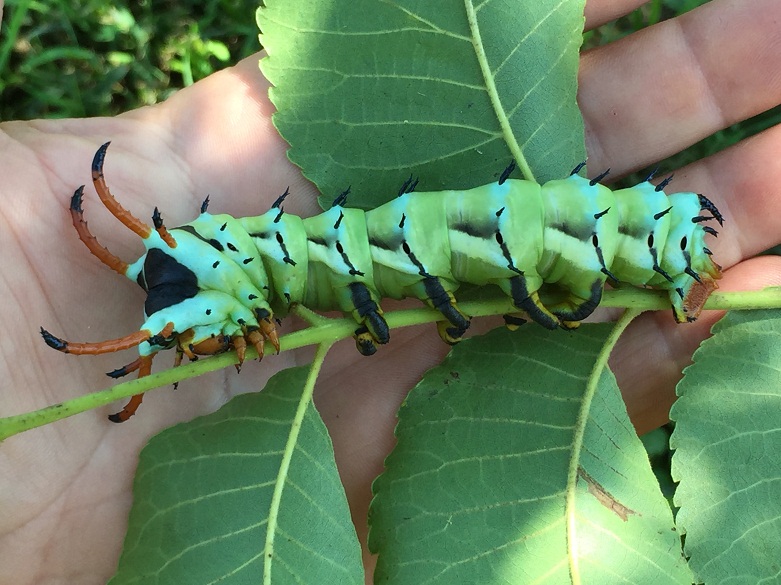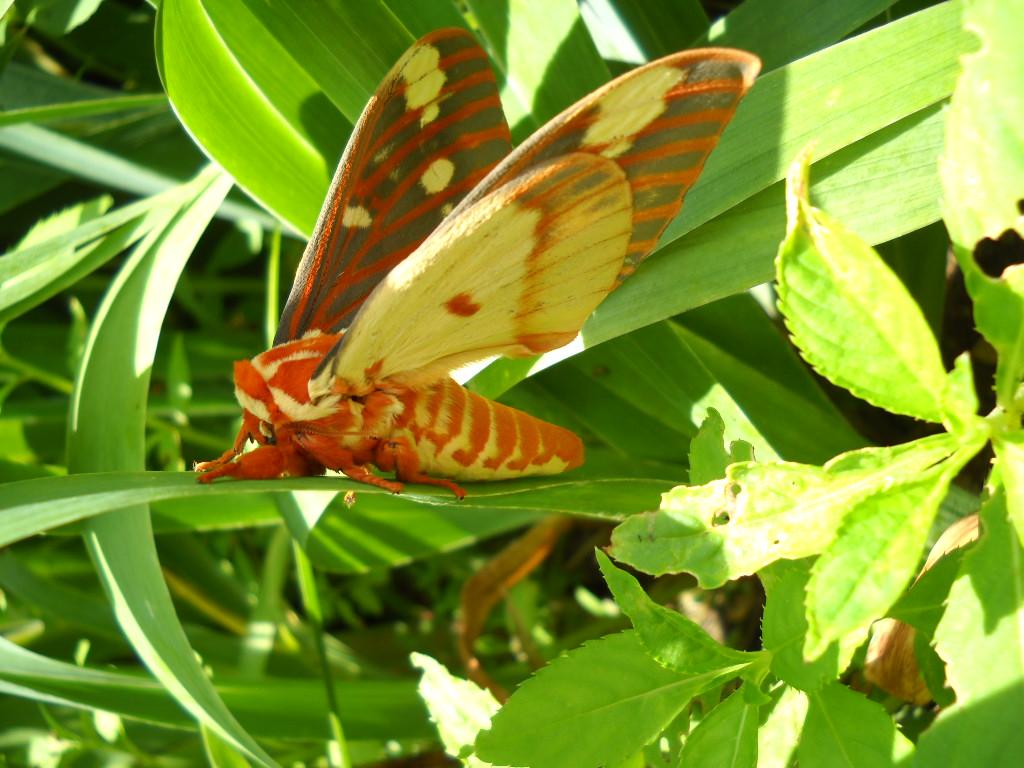Regal Moth (Citheronia regalis)
Regal moth, a native of North America, belongs to the Saturniidae family. Danish zoologist Jonathan Christian Fabricius described them first in 1793.
1.bp.blogspot.com
Scientific Classification
- Family: Saturniidae
- Genus: Citheronia
- Scientific Name: Citheronia regalis
Description and Identification
Caterpillar
The larva at the onset is small with a yellow body. In the initial stages of their life, they are solitary feeders, eating primarily at night. During the day, they mostly remain curled up like a j-pattern, closely resembling a bird’s dropping. Each instar varies from the other in color and pattern, but in the fifth and final stage, they turn bright green and develop large red horn-like projections, tipped in black. At this time, they grow long enough to about 15 cm. They may look dangerous, but are completely harmless, as the spines do not sting and prick. When the larva is about to pupate, it expels its stomach and changes color from green to turquoise. Its skin at that moment is tight and a little stretched attaining a shiny texture.
Adult Moth
Sexual Dimorphism: Present
Color and Appearance: When opened, the forewings are grayish-green or gray with orange veins. It also has about nine yellow spots scattered throughout in rows. The hind wings are majorly orange with yellow spots or patches occupying the anal and costal margins. When closed, the color and pattern remain the same, with about four to five visible spots.
Though similar in color and pattern, male regal moths are smaller than their female counterparts.
Sexual Dimorphism: Present
Average wingspan: 9.5 – 15.5 cm
Flight pattern: Fast and erratic
Season: May to September
Quick Facts
| Other Names | Royal walnut moth, hickory horned devils ( as the larvae are called) |
| Distribution | Several parts of the United States, including Pennsylvania, Massachusetts, Missouri, Texas, and Florida |
| Habitat | Deciduous forest areas |
| Predators | Species of tachinid and sarcophagid flies, and also wasps |
| Lifespan of adults | Approximately 10 days |
| Host plants | Carya, Rhus, and Gossypium species, Liquidambar styraciflua, Juglans cinerea, Diospyros virginiana |
| Adult diets | Mostly nectars |
Did You Know
- Since the larva mainly thrives on walnut leaves, they are known as the royal walnut moth.
- The unique coloration and horned appearance of the larva in their last instar stage earns them the name hickory horned devil.
Scientific Classification
- Family: Saturniidae
- Genus: Citheronia
- Scientific Name: Citheronia regalis

